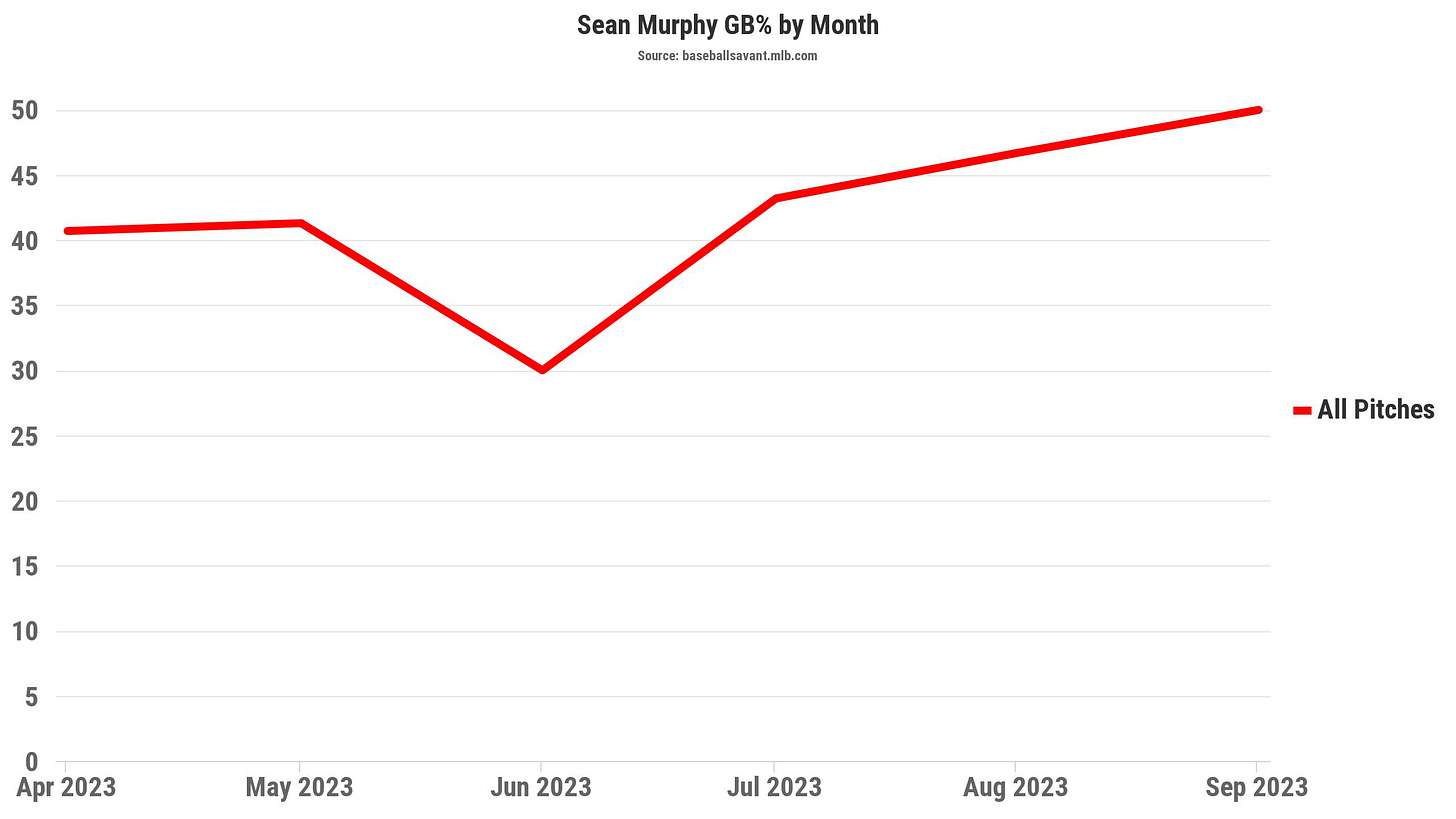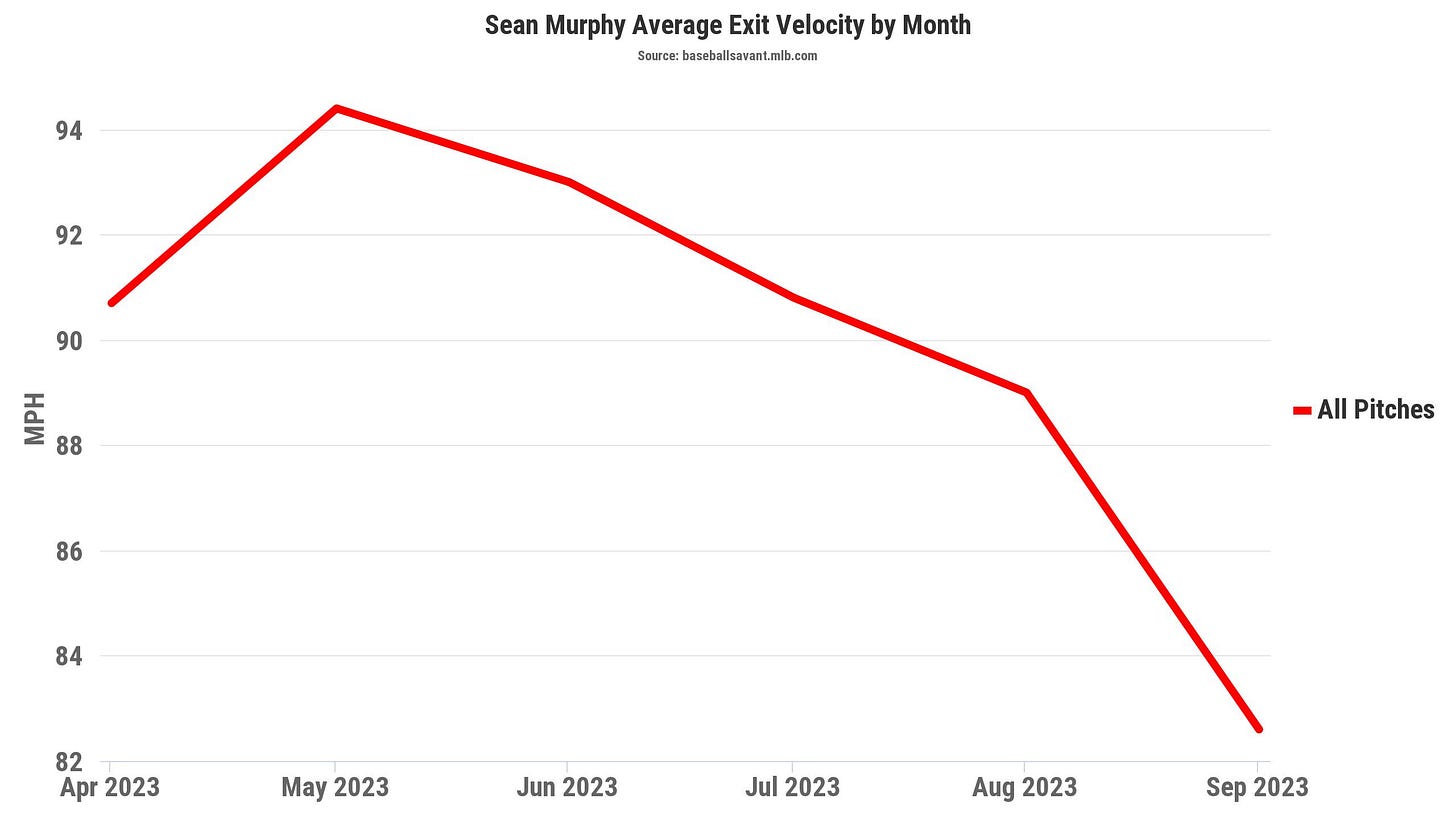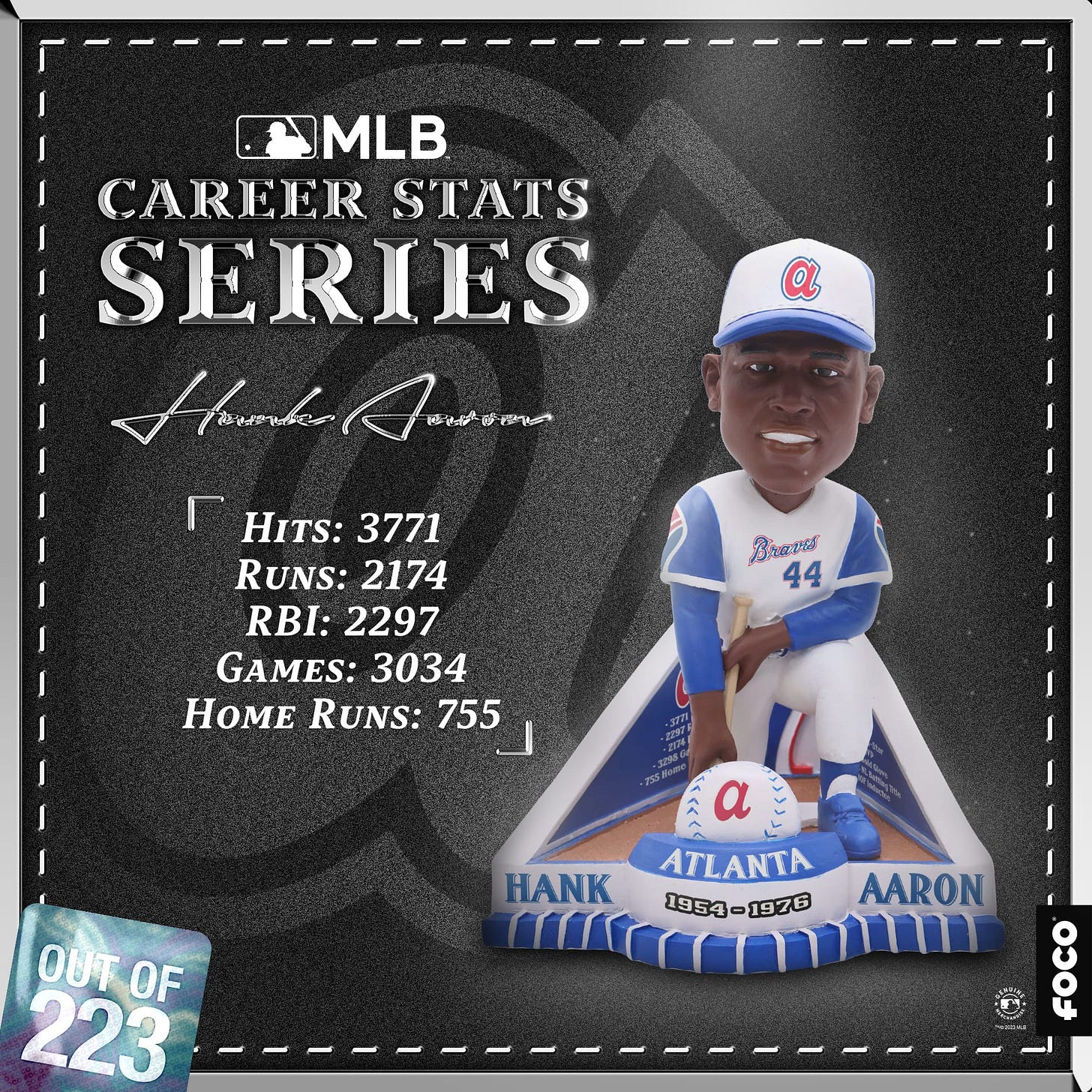Sean Murphy and the case of the cold bat; plus, an honest assessment of the Braves' bullpen
We'll also go down a Braves Rabbit Hole and enjoy a random TBS memory.
Good morning, everyone. As Blooper likes to say, “It’s Friday. Act like it.”
Let’s get right to it.
What are the Braves doing today?
They open a three-game series at home against the Pirates. Their magic number to clinch the NL East is 10. They have a six-game lead over the Dodgers for best record and home-field advantage throughout the playoffs.
Stat watch
Ronald Acuña Jr. is now on pace for 40 homers and 73 stolen bases, which, as you know, would be a first in MLB history. Stop and think for a moment just how crazy that is. Meanwhile, Matt Olson is on pace for 55 homers, which isn’t too shabby either.
Today in Braves history
Sept. 8, 1982: Dale Murphy lines in a single into right-center field in the bottom of the 10th inning to score Claudell Washington from second as the Braves walk off the rival Dodgers 12-11 in a wild, back-and-forth game to regain sole possession of first place in the NL West. Watch the play here.
The Big Thing: Sean Murphy and the case of the cold bat
It’s not been a good second half for Sean Murphy. It’s been surprisingly bad, actually, considering how impressive he was in the first half.
But baseball is often a game of hot-and-cold extremes, and Murphy’s bat has gotten to know both sides of the Thermal Realm.
Since making the All-Star team with a first-half slash line of .306/.400/.599 (.999 OPS), Murphy enters play Friday hitting just .178 with a .643 OPS in the second half. He’s 18-for-101 in 30 games since the break. It’s well beyond “slow start” and “small sample size” and firmly in “dreadful slump” territory.
Although Murphy’s season numbers are still strong — 20 homers, .891 OPS — a deeper look helps explain the brutal cool-down since mid-July.
In simple terms, he’s been hitting way too many ground balls and generally not hitting the ball as hard as he did earlier in the season. That’s an unfortunate combination.
His ground ball rate has, ironically, been climbing skyward. After a season-low ground ball rate of 30 percent in June, it climbed to 43 percent in July, then to nearly 47 percent in August and is now at 50 percent for his few games in September, according to Baseball Savant. His career average ground ball rate is 41.7 percent.
As you might imagine, this has tanked his average launch angle, a key element in driving extra-base hits and homers, which went from a strong 16 degrees in June to a much weaker average of 11 degrees since the beginning of August.
Just as his ground ball rate has soared, his average exit velocity has been on a steady downward slope. Murphy averaged a season-high 94.4 mph off the bat in June (which is an Ohtani, Judge, Stanton level), but has been just a bit above league average (which is 88.4 mph) since July, and at just 82.6 mph so far in September.
Higher Ground Ball Rate + Lower Exit Velocity + Lower Launch Angle = Not Many Hits.
So what’s the reason for all the ground balls and “softer” contact? Well, that’s the key question. But if there was an obvious answer, Murphy and the Braves would’ve fixed it already. So all we can do is speculate: Maybe his first summer playing consistently in the Southern heat has taken a toll, or maybe his new league has made adjustments and he’s just failed to adjust back. Maybe he’s just sore from those 17 hit-by-pitches.
But the most likely explanation might be that he over-performed in the first half — his career OPS is .787, with his highest full-season mark being .759 last season — and he’s regressing to fall more in line with career norms. But if that’s the case, it could mean another frigid month for Murphy’s bat. Remember that .787 career OPS? That’s 113 points lower than where he is now. But, honestly, it’s hard to believe that Murphy will stay that cold for that long. Whatever work the Braves did with him in the first few months clearly paid dividends, so at least a moderate turnaround could be on the way soon.
But the Braves have to hope his second half concludes in a manner more reflective of his first.
The Braves’ bullpen is really good. Did you know that?
No, you didn’t know that — I’ve seen your tweets. As of Friday, the team relief corps ranks first in the National League in left on base percentage (75 percent). That’s fifth-best in all of baseball. If you’re wondering, the Yankees are the best in that category at 76.6 percent. The Braves’ relievers also have the best ERA in the NL, at 3.53. They’re also tops in the league in FIP (3.74) and K/9 (9.91), and are right there with the Phillies (5.8) and Dodgers (5.6) for best WAR (5.3). See? Really good.
Braves Rabbit Hole: Phil Niekro’s 1978 magic
I don’t even remember why, but I went to look at the 1978 NL Rookie of the Year vote on Baseball Reference the other day and happened to catch something on the same page under the NL Cy Young section. It was the number 10, as in the league’s leader in pitcher WAR for that season. That player was Phil Niekro, but he wasn’t anywhere near the top of the vote for the award. He went 19-18 with a 2.88 ERA (2.76 FIP). Back then, of course, pitcher wins and ERA were pretty much all people cared about, so it’s no surprise that Niekro finished a distant sixth in the voting. However, voters obviously recognized Niekro’s value, hence him getting enough votes to finish sixth, even if they didn’t actually realize that they recognized his value.
Voters probably saw the 19 wins and thought, “Well, that’s good.” Then they saw the 18 losses and thought, “Well, that’s bad.” Then they saw the 2.88 ERA and thought, “Well, that’s solid.” Then they pondered it all and thought, “OK, I’ll give him a down-ballot vote.”
But dig deeper and Niekro’s value becomes more clear. He made 42 starts, more than anyone else, and pitched 334.1 innings, 59 more innings than anyone else. That’s the equivalent of 6.5 extra games. He had 22 complete games — TWENTY-TWO — and his four shutouts were tied for most in the NL.
Niekro faced 1,389 batters (250 more than anyone else) and allowed runners to reach via a hit, walk or hit-by-pitch a total of 410 times. Overall, the on-base percentage against him was just .298. But as a result of facing a lot more batters than anyone else, he also allowed more hits than anyone else (295 in total), hit more batters than anyone else (13 in total) and also allowed 102 walks, thanks to thank dancing knuckleball. But the overall success percentage of batters was pretty low, thanks in large part to that same knuckleball, which led to 248 strikeouts that season and was second in the league to J.R. Richard’s 303.
So not only was Niekro a reliable and durable innings-eater, but he was quite effective at getting outs when he needed them and keeping runs off the board, despite all those base runners. There’s huge value in that. That’s how you get 10 WAR as a pitcher. By the way, the pitcher with the next-highest WAR that season? The Giants’ Bob Knepper at 6.3. He did not place in the Cy Young vote.
Had the 1978 Braves been good and not gone 69-93, Niekro almost certainly would’ve had a significantly higher win total — perhaps has many as 27 or 28 — which in those days likely would’ve led to a runaway win the Cy Young race.
The winner that year was future Hall of Famer Gaylord Perry, who had a strong season: 21-6 with a 2.73 ERA and a 4.3 WAR. But Niekro was far and away the more valuable pitcher, even if voters couldn’t truly see it at the time.
Random TBS memory
I have a weird nostalgia for the 1989 season, and for that whole summer in general. I was 13 and the Braves were terrible, but I still treated every game as appointment viewing. But when I think of that season, I don’t think of the game I saw in person on my birthday, when the Braves beat the Expos 13-3, nor do I think of the time in July when I was listening on the radio as Dale Murphy hit two homers in one inning.
No, what I think back to is a random game on June 21, the first game of a double-header, when Jeff Treadway walked off the Reds to complete a ninth-inning comeback.
It was the first of just two walk-off wins for the Braves that year.
Part of my memory associated with that game is running errands with my grandmother that afternoon and there being a thunderstorm while I watched the game. Memories are weird.
Immaculate Grid tip of the day (but not necessarily for today)
Former Braves utility man and current Nationals manager Dave Martinez is surprisingly versatile on the ol’ Grid. He played for the Cubs, Expos, Reds, Giants, White Sox, Rays, Rangers, Blue Jays and, of course, Braves. Not only that, but he hit .300 for the White Sox and Jays, for when that square pops up. If you’re a low rarity score person, Martinez is usually good for 1 percent or lower. So keep that in your back pocket.
A closing note
The flow and format of today’s newsletter is probably what you can expect most days. The categories won’t always be the same, and I’m sure it’ll evolve as we go, but this is the basic idea. If you have suggestions, let me know.
As for the frequency, I’m still debating that. But, at the least, it should be three days a week during the season. I’m excited for where things could go.
Finally, a reminder: Subscribe by 3 p.m. today (Friday, Sept. 8) and be entered to win this cool Hank Aaron bobble head.
Thanks for reading. See you next week.








That Skip Caray call on the Treadway walkoff sounds like a rehearsal for the famous 1992 “Braves Win! Braves Win! Braves Win!” call.